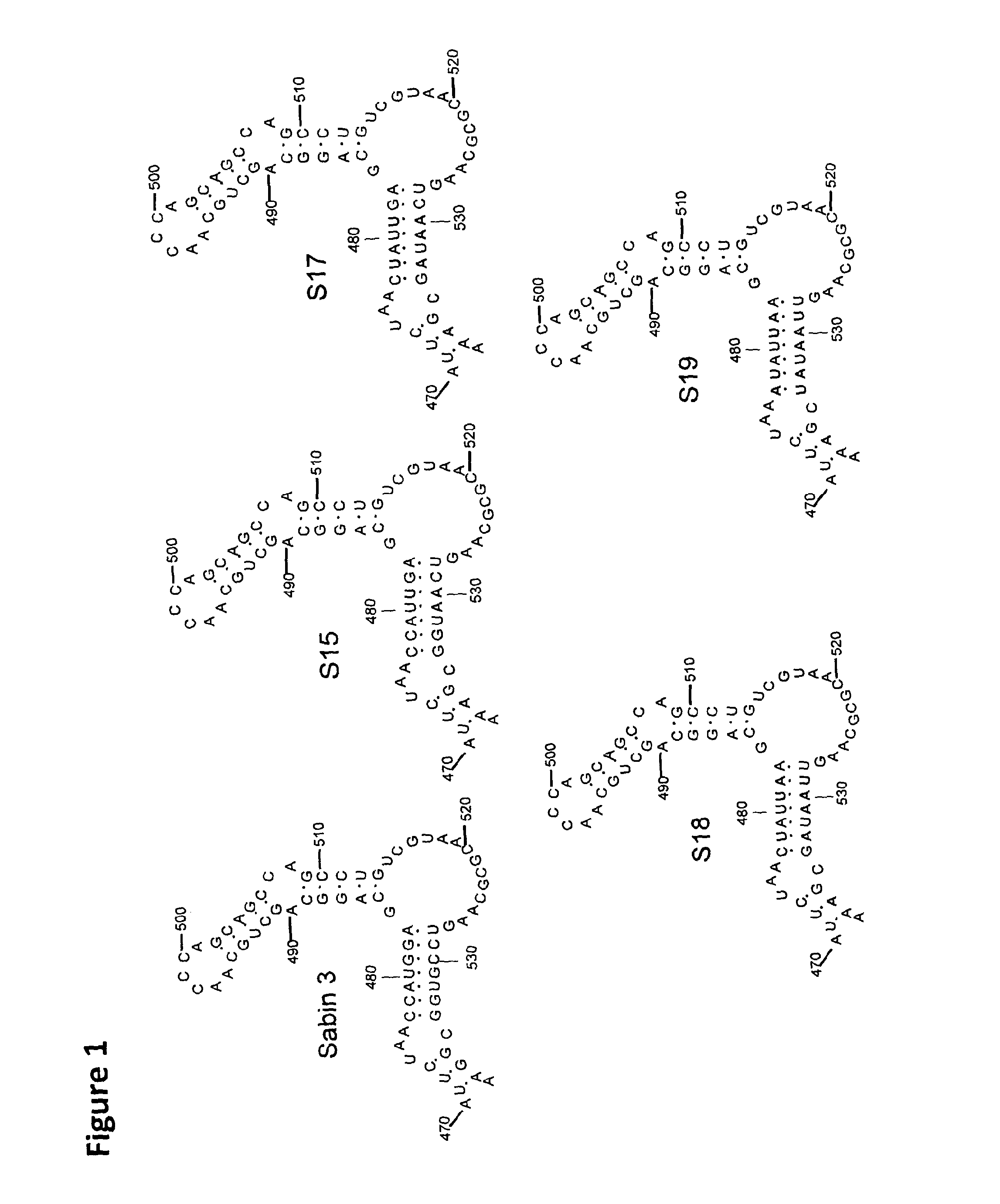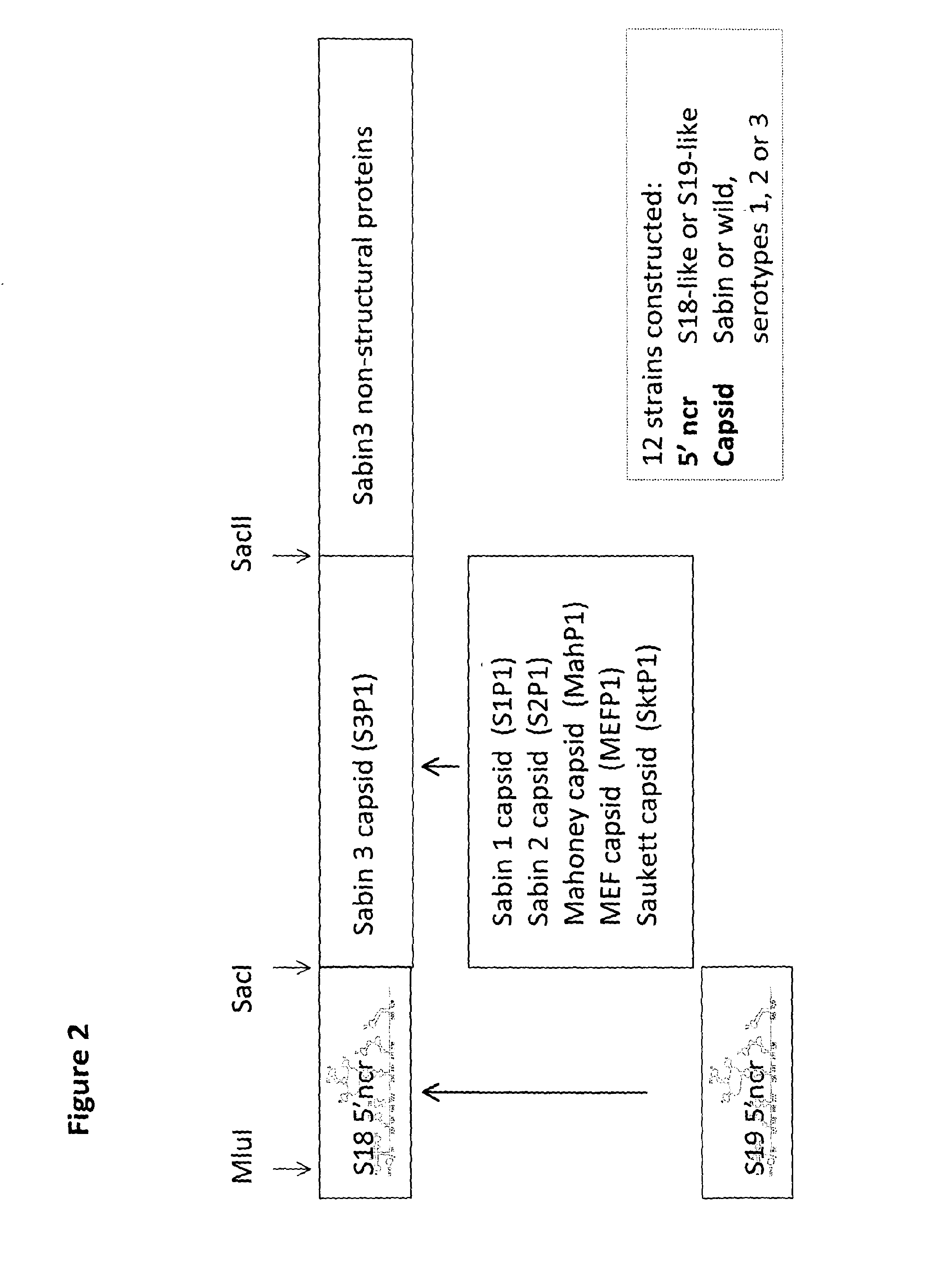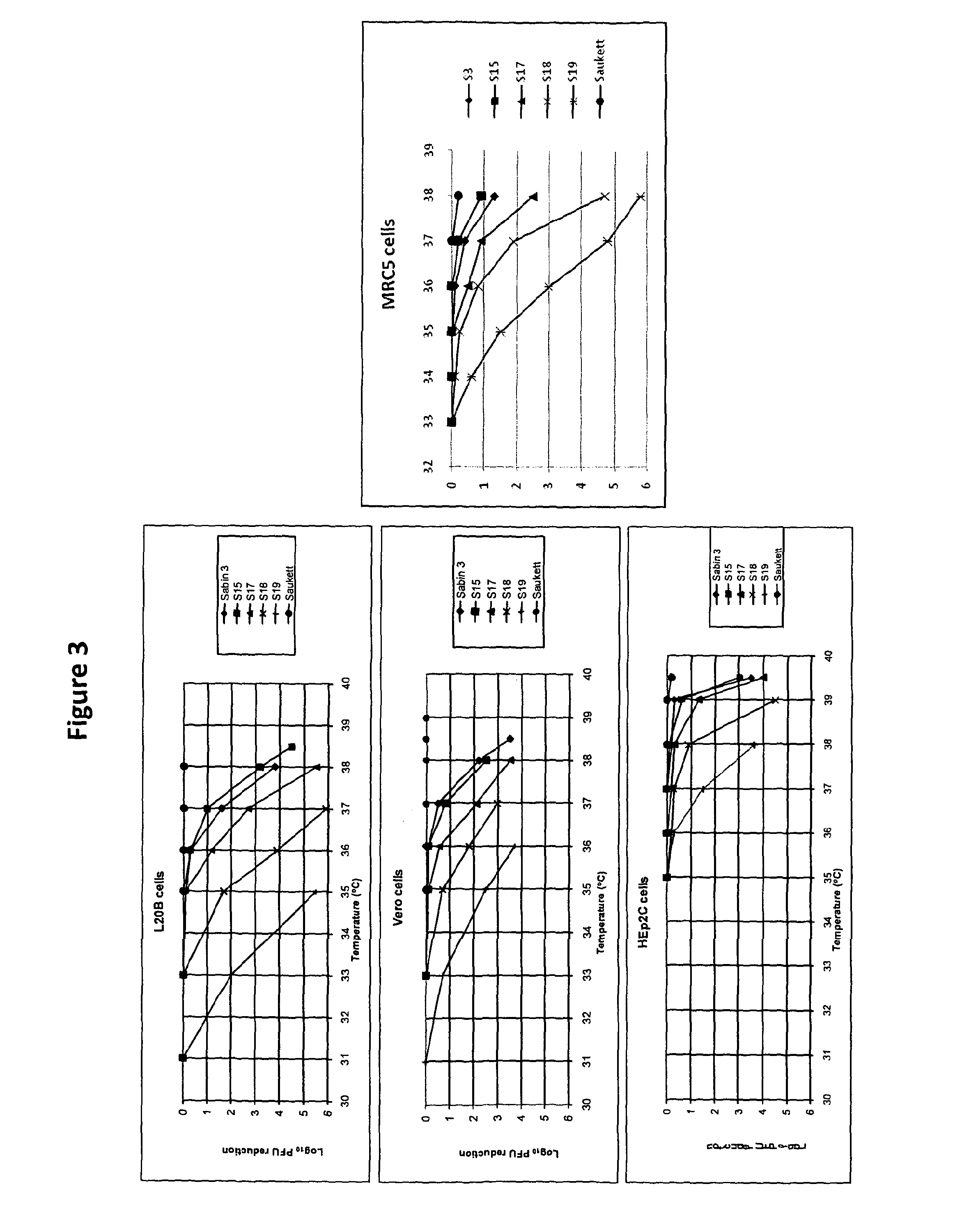Inactivated poliovaccine
a technology of poliovirus and polio vaccine, which is applied in the field of inactivated poliovirus, can solve the problems of outbreaks, containment problems, extreme unwise stopping vaccination, etc., and achieve the effects of improving immunogenic properties, safe use in ipv production, and enhancing growth capabilities of tissue culture cells
- Summary
- Abstract
- Description
- Claims
- Application Information
AI Technical Summary
Benefits of technology
Problems solved by technology
Method used
Image
Examples
example 1
Construction of New Strains
[0070]S15, S17, S18 and S19 (Table 1, FIG. 1) are derivatives of the type 3 oral poliovaccine strain Sabin 3. Viruses were constructed and recovered by standard methods. Mutated nucleotides are shown in bold in FIG. 1, otherwise sequences are identical to Sabin 3. Replacement of CG base-pairs by UA or AU base-pairs progressively lowers the thermodynamic stability of domain V; removal of all UG base-pairs makes the structure genetically stable as any single mutation would then weaken the relevant base-pair. Two simultaneous mutations would be required to strengthen the structure as this could only be achieved by changing a UA base-pair to a CG (or GC) base-pair.
[0071]Viruses were constructed and recovered by standard methods. More specifically, S17, S18 and SI9 were constructed by PCR mutagenesis. For each plasmid, three fragments of the 5′ non-coding region of Sabin 3 were amplified by PCR using primers incorporating the necessary sequence changes (as show...
example 2
Attenuation Phenotypes and Infectivity
[0079]Over the last 15 years the use of transgenic mice expressing the human poliovirus receptor to assess virulence of polioviruses has been established and validated.
[0080]Intraspinal inoculation of transgenic mice expressing the poliovirus receptor (TgPVR mice) is a highly sensitive method of measuring infectivity in vivo since virus replication leads to neuronal loss and obvious clinical signs of paralysis. Fewer than ten PFU of wild type viruses is usually sufficient to paralyse 50% of the mice using this route of inoculation (Chumakov et al, Dev. Biol. (Basel) 105:171-177, 2001).
[0081]The attenuation phenotypes of the mutated Sabin 3 strains and the intertypic recombinant strains were determined by this standard method. The results are shown in Tables 1 and 2.
TABLE 1Effect of domain V replacement on attenuation phenotypesTgPVR micePD50 i.s. / log10 CCID50Sabin 12.25Mahoney≦0.7S15 / 12.0S18 / 1>8.6 (1 / 16)Sabin 26.4Sabin 33.6S153.7S177.4S18>8.4 (0...
example 3
Stability on Passage
[0083]To assess stability, viruses were passaged at 37° C. in L20B cells under conditions which rapidly select reversion in domain V of Sabin 3, mimicking selection in the human gut. Under these conditions the domain V sequences of S15 and S16 (phenotypically similar to S15) were completely stable (Macadam et al, 2006). S18- and S19-derived viruses were also stable on passage and have the advantage of additional non-revertible paired mutations. The same was true in Vero cells but selection of reversion in domain V of Sabin 3 occurred at a slower rate.
[0084]All Vero selected viruses had a mutation in the protease 2A gene and grew at higher temperatures than their parents, to a limited extent. This phenomenon represents an adaptation to monkey cells and is not seen in cells of human or mouse origin. These mutations appear to have no effect on phenotypes in vivo (Table 3). The PD50s of one of the viruses after 10 passes in Vero cells at 37° C., and three of the plaq...
PUM
| Property | Measurement | Unit |
|---|---|---|
| temperature | aaaaa | aaaaa |
| temperature | aaaaa | aaaaa |
| temperature | aaaaa | aaaaa |
Abstract
Description
Claims
Application Information
 Login to View More
Login to View More - R&D
- Intellectual Property
- Life Sciences
- Materials
- Tech Scout
- Unparalleled Data Quality
- Higher Quality Content
- 60% Fewer Hallucinations
Browse by: Latest US Patents, China's latest patents, Technical Efficacy Thesaurus, Application Domain, Technology Topic, Popular Technical Reports.
© 2025 PatSnap. All rights reserved.Legal|Privacy policy|Modern Slavery Act Transparency Statement|Sitemap|About US| Contact US: help@patsnap.com



